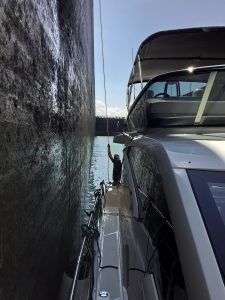The Erie Canal System

Whether for business or leisure, I quite often catch myself telling people how I’ve seen more of the world than my own back yard. Every chance I get, I huck myself out there into the world just to feel the viscerality of life – and with each new humbling experience, comes a lot more respect for it.
What eventually took me the better part of 30 years to realize was that, not even a stones throw from my back yard, there were innumerable layers of the most fascinating history, scenery, and stories splayed all around me.
It’s no secret that seeing a place via the water gives you this feeling of nostalgic conquest, as if that’s the angle from which these places were supposed to be experienced. Moreover, many coastal and river-front establishments were so developed for both logistical and military purposes. And so, to be able to experience any of New England’s gems such as Newport, Nantucket, Mystic, and New York from the water, certainly leaves a lasting and humbling impression.
Historically speaking, we’ve yet to construct anything in the recent past two centuries that has rivaled the greatest modern marvel in North America – it’s not the Hoover Dam, or the San Francisco Bridge, nor any of the tallest of skyscrapers.
The Erie Canal System connects the open water ways of the Atlantic in the east, to the tributaries and Great Lakes and Canadian waterways of the great Midwest – essentially connecting the East to the West. Once a pipedream of an idea for the Shangri La of trade routes, from her initial presidential proposal in 1780 to her grand opening in 1825, then the final version in 1918, the Erie Canal System is still the most interesting corridor of history that I’ve even had the opportunity to navigate.
What once greatly lowered the cost of shipping between the Midwest and the Northeast for anything from food, machinery, and manufactured goods, now primarily provides an avenue of respite for the recreational boater wishing to explore the pristine backcountry of the Northeastern US – beginning at the confluence of the Hudson River and Mohawk rivers in [Troy] New York, and ending at the Black Rock Loch in Buffalo to the west or else Oswego to the north.
Working its way through 34 Lochs and with a modest elevation gain of 565 feet, the entire canal takes about a week to traverse depending upon speed, weather, and desire to sightsee. Commercial shipping has slowly shown an increased presence since 2008. And be it due to tourism, Colleges and Universities, or industrial and commercial reasons, the otherwise sleepy canal towns still find a way to keep lively.
